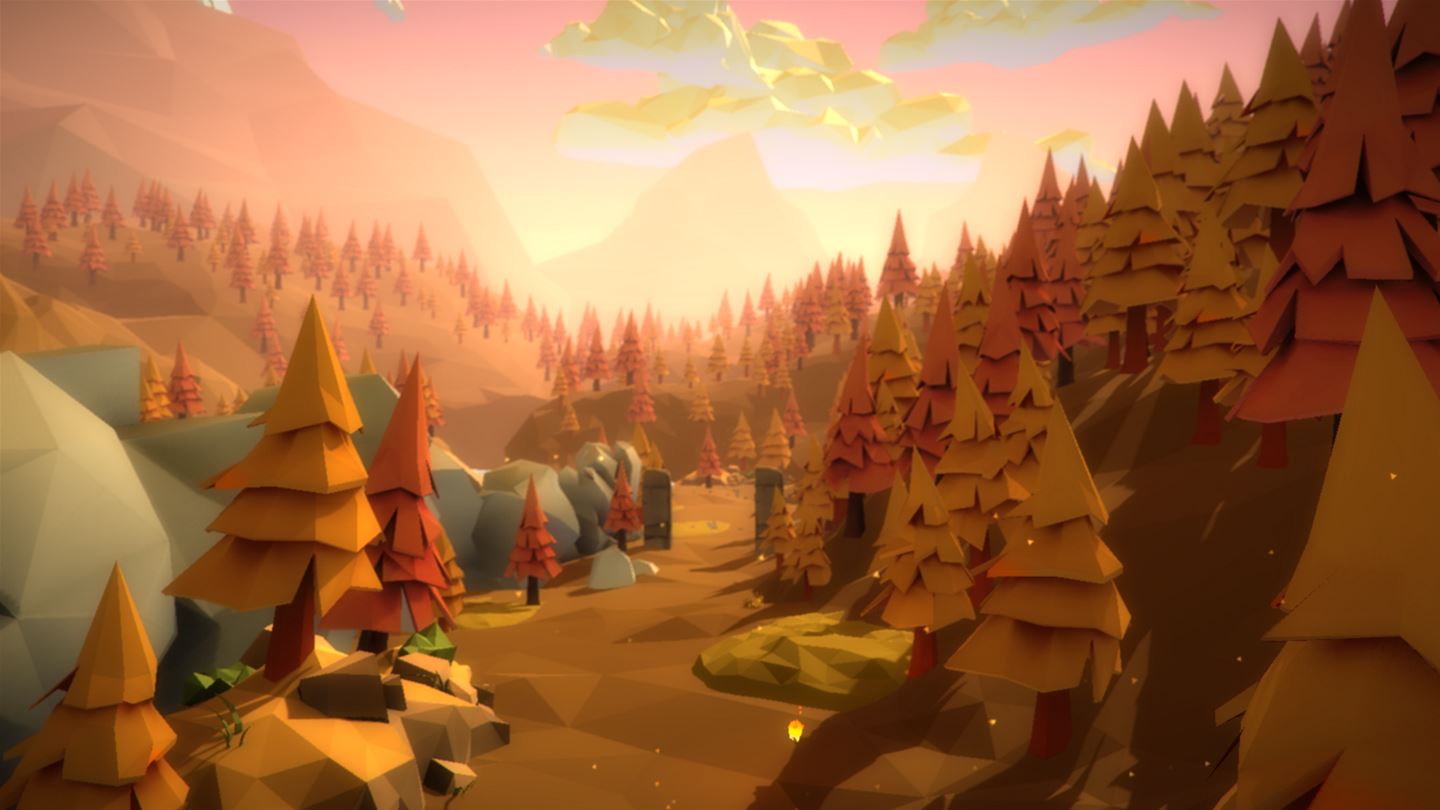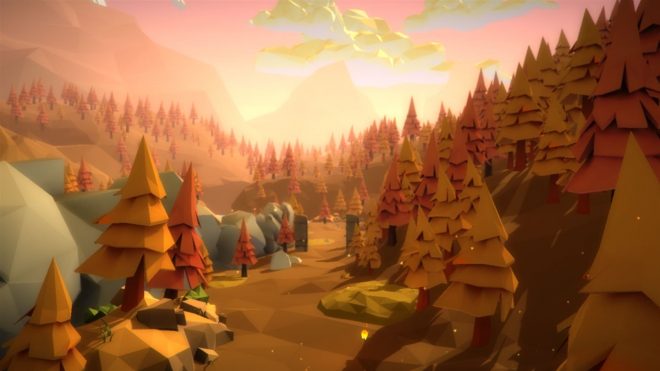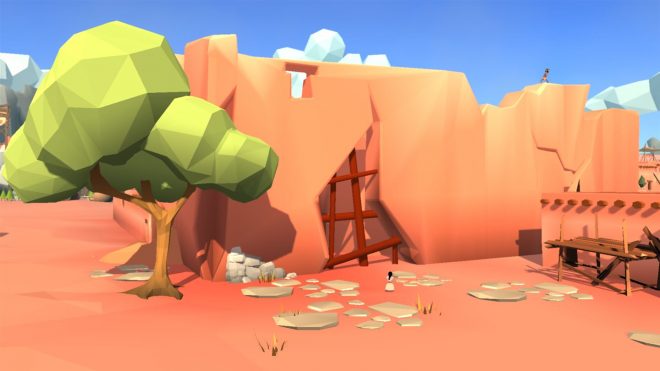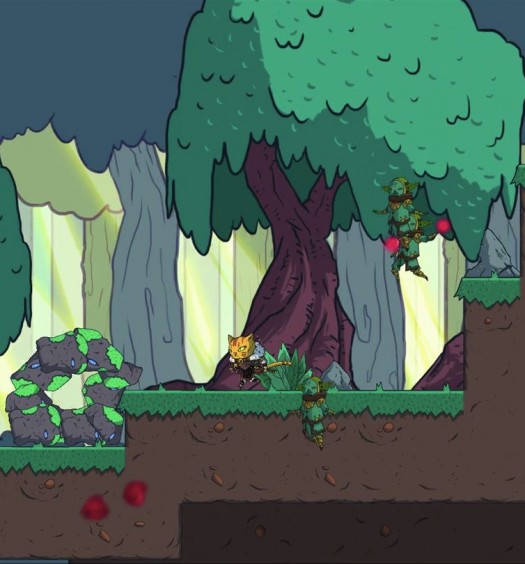It’s interesting to play a game that’s not only fun but can provide a history lesson as well. A lot of the knowledge around the world’s monuments, landmarks and even historical landmarks I gained thanks to the developer taking the time to add the history behind it somewhere in their game. Before experiencing Mulaka, I knew nothing about the Tarahumara. Thanks to developer Lienzo basing a large portion of the game around the indigenous culture known to be “superhuman.” I can genuinely say I’ve learned quite a bit from the lore of the game. But how does the gameplay stack up to the knowledge behind the game?
Mulaka is a 3D Action Adventure game that bases around northern Mexico in environments inspired by real Tarahumara locations. You play as Sukurúame, a Tarahumara shaman destined to drive back the corrupt evil plaguing the lands using the power of the demigods. These unique powers and transformations assist with many different scenarios. Each level requires you to find three artifacts hidden somewhere in an open world environment. Some are hidden in plain sight, others can be hidden behind a water flowing puzzle and the rest are hidden in a vase that grants access after defeating a bunch of enemies in a combat scenario. Collecting all three opens a door that can lead to a boss for the level, a demigod statue or just the exit to the level. Can you free the Tarahumara from the corrupt darkness?
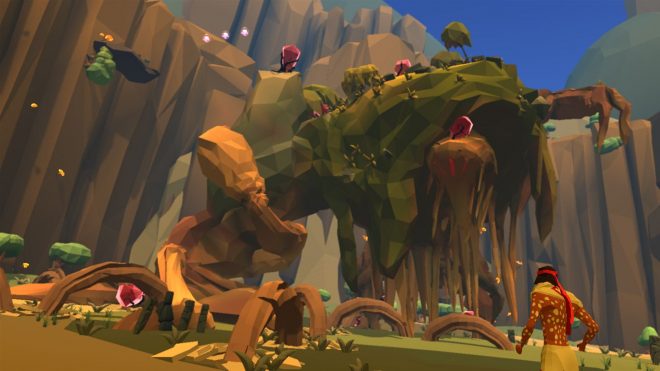
What I liked:
Rich Lore – The strongest aspect of the game comes from the lore. The game includes a lot of history and interesting facts surrounding the Tarahumara culture. Whether it be speaking with different people, lore gave from important spots hidden throughout the levels or information provided by the many demi-gods there is something to learn around every corner. If you were to take everything out of the game but leave the lore, the game could potentially be a digital history lesson.
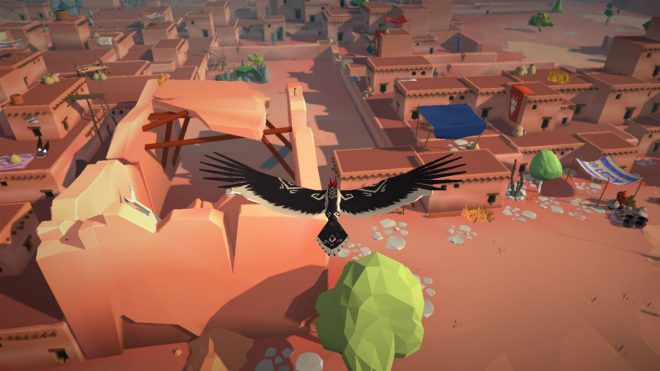
What I didn’t:
Combat – Once you start playing through Mulaka, you’ll quickly begin to notice a pattern. When you advance in a level trying to track down the three artifacts or making your way to the boss you’ll find yourself trapped in a secluded area facing off against waves of enemies. At the start of the game, it’s somewhat of an interesting concept, but further in, you start to encounter more types of enemies, and you quickly realize how small the space is in comparison to how large the enemies are. The most significant issue is how there is absolutely nowhere you can go during combat to get a breather. About a quarter of the way through the game it started becoming sheer aggravation having to constantly complete these combat scenarios due to the sheer fact of how many enemies I had to face at one time and how much the odds were stacked against me. The game includes an evade ability to try and assist the character in avoiding damage from enemy attacks during combat. This specific ability is useful on early enemies, but later in the game, it becomes completely useless to use. Certain enemies will still knock down Sukurúame as they are charging despite evading. Frog-type enemies will still grab Sukurúame with their tongue despite evading. The overall element is broken. No matter how, when or where you use this ability it never seems to work in your favor.
Items – There are four items that Sukurúame has at his disposal. At the start of the game, you only have access to soul potions, which essentially heal your character. As you progress through the game, you will later unlock bombs, rage potions and shield potions. Potions are automatically crafted when the required amount of ingredients are harvested. These ingredients commonly appear on grassy mounds and in large quantities. The game allows for a maximum of 10 of each item to be held at one time. The bombs are the most useful item, as using them boils down to pressing right on the d-pad and X to confirm throwing it. The potions on the other hand are abysmal. Most times you want to use one of these three potions, chances are you’ll be inside of a combat bubble. When activated, Sukurúame has to do a short 5 second dance before the item actually takes effect. When you’re dealing with a bunch of enemies in a confined space, using one of these potions continually leaves you vulnerable from the time you use it to the time the dance is about finished. This can really be a life or death situation if you’re at a sliver of health and you’re waiting for the soul potion to heal you. An enemy has the potential to walk up and attack, killing you before the potion even takes effect. Furthermore, there are enemies that can disrupt the dance altogether making trying to use an item next to impossible. The harvesting of ingredients also feels pointless considering the ingredients grow back after a short time allowing for infinite resources.
Upgrades – In just about every game I’ve ever played, when I hear the term “upgrades,” I instantaneously think of abilities or power-ups that make my character stronger. It would seem that Mulaka has a different definition altogether. There are a total of 7 upgrades for Sukurúame, all of which can be purchased with soul currency obtained from killing enemies, defeating bosses and hidden throughout pots on each level. From the start, one would think that it would be appropriate to go for the soul damage resistance upgrades. Others would assume it would be more beneficial for 30% more damage to Sukurúame’s spear weapon. Unfortunately, neither choice is considered a good choice as both upgrades have a very minute difference. Fighting many different enemies at a time can quickly diminish your health even with all the resistance upgrades, and later enemies can take one of the three bars down by 3/4 in one hit. In regards to the damage increase, the addition is noticeable on a lot of smaller enemies, but on more of the later enemies, the 30% difference doesn’t even seem like it applies. Some of the useful upgrades contain the ability for faster magic recharge, as well as a larger area of effect for Sukurúame’s Spear attack.
Magic – Every transformation you use in Mulaka will require magic power to use. Sukurúame also has a special vision power at his disposal to track artifacts, unique points of interest and even hidden objects. Once the bar drains completely, Sukurúame will transform back into a human or his vision mode will turn off and you’ll need to wait a short time before using either again. The upgrade does decrease the time required for the magic bar to recharge, however it’s only placing a band-aid over a larger issue. The magic bar drains fast. No matter which transformation you’re using, your power deactivates and recharges in a moment’s notice. Some of the later levels require constant use of the transformations to access certain areas and while there are magic orbs placed about that could help recharge the magic bar immediately, they are awkwardly placed lower than direct flight paths and missing any while flying or climbing will cause Sukurúame to transform back into a human and fall. A few times this would lead to my death, other times I would fall all the way down to the start of a mountain I was trying to climb. It’s most infuriating when trying to track down the artifact pieces in a level as the vision power constantly needs to be turned off and on. It probably would have made more sense to have an upgrade that increased the amount of magic you had, or even given infinite magic power at some point.
Objective Markers – As you explore the different worlds that Mulaka has to offer, chances are you’ll use your vision power numerous times while on the hunt for some of the artifacts or maybe even for some of the other hidden collectibles. The objective markers displayed on the vision are atrocious. Basically, if the objective is in front of you, the objective icon will be on the top of the screen, and if it’s behind you, it will be on the bottom. There is a number accompanied by the icon to tell how close or how far away you are from the objective. The marker will move to one of the sides of the screen as well to help try to advise where you need to be facing. The problem is once you start getting closer to an objective, it’s almost impossible to tell where it is. Once you’ve reached near the location of what you’re looking for, the icon disappears, and you’re left squandering around trying to find it. A few times, the objective marker was directing me towards another person for the artifact. While the person indeed had the artifact, they wouldn’t allow me to have it until I completed another objective which had no marker whatsoever. I then found myself scrambling around for 25 minutes trying to find and complete that new objective before I could gain access to the artifact. The whole formula is mess.
Airborne Enemies – Probably one of the most irritating parts of the game comes from the airborne enemies. Only one type of enemy can fly, and the only way to knock them out of the sky is either with a well-timed spear throw or by jumping and stabbing them. Spear throw is an ability that Sukurúame has that when standing still that allows him to aim and then throw a spear at an enemy. It works for both ground and air enemies, but it’s most effective against the flying type enemies to quickly ground them. The spear doesn’t kill them. However, Sukurúame is still required to run over and attack them as he would any other enemy. Jumping and stabbing an enemy is a lot more difficult as most of the time the enemies are on the move which makes hitting them annoying, but still possible. These flying enemies also have an ability of their own which constricts Sukurúame and makes him immobile until an enemy attacks him. Most of the time you’re trying to throw a spear you’ll find yourself being lassoed by these enemies or attacked from behind by other enemies. The only saving grace to getting rid of them quickly comes from a finishing move that Sukurúame has access to after dealing so much damage out.
Brief Tutorials – There is a lot to learn when you start playing Mulaka. The first tutorials will walk you through the various controls, attacks, item usage, etc. Later in the game, however, you’re given access to the transformation powers. While some transformations such as the bear require no real tutorial considering they come and go in an instant, other animals such as the bird, puma and snake will have you dealing with a little trial and error to master fully. The only sort of tutorial you are given for these creatures revolves around activating them. If there is any special ability they may have, you’re left trying to figure it out for yourself. The bird, for example, flies in a straight line and can sometimes fly too high, however pulling back on the left stick will slow the bird allowing him to lose a bit of altitude. The bird is very temporary. The snake power can swim on the top of the water and even freeze vines, which the bear can then destroy. All of which required me to self-learn. It’s also not mentioned at all that the transformations require magic to use, which is of some importance to know.
Level Design – The levels of Mulaka from an outside perspective would look open for the player to explore. Unfortunately, the level design can be quite deceiving on where the player can go. Many of the levels are ridden with invisible walls to stop the player from going to places which they are not allowed which is normal. What’s different here is in many areas where you would still think you are in the play area, you try to move up a hill to get a better vantage point to land on a cliffside only to realize that your character is unable to move forward any more for no particular reason. While trying to reach different spots upon mountains and pillars, I would try to find the best place to land to grant better access to a platform only to realize consistently that there was an invisible barrier blocking my way and I was not allowed to go there. It can be infuriating and a little off-putting to try and collect everything the game has to offer just because of this issue. Furthermore, issues with terrain are an issue with the different transformations. The snake transformation, for example, can ride on top of the water but many times I found my character would fall through the water and be stuck underneath until my magic ran out and the game would kill me. Other times I would land on a platform that would have an invisible barrier blocking only a portion of it. It’s really a guessing game of what’s safe and what isn’t.
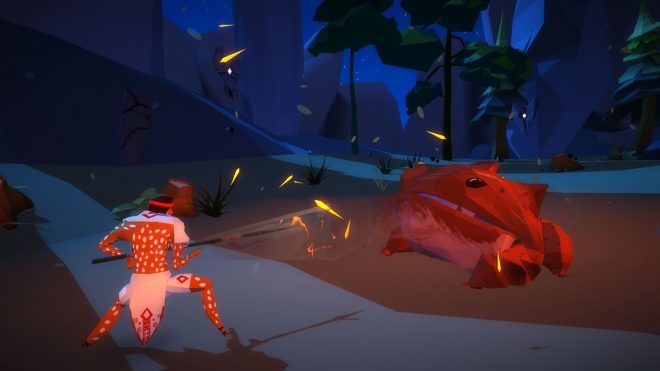
Wrap-up:
Frankly, the strongest aspect of Mulaka is the lore, and if the game based solely around it, it would be solid. Unfortunately, the game stems from a lot of problems around combat, overall mechanics and quite a lot of bugs and glitches. For some, the issues can be ignored merely for the experience. Others will find the game too difficult to keep interest in especially for those not so interested in the lore around the game and looking more for high-quality action-adventure gameplay. If you honestly feel you must play Mulaka, you may want to wait for a sale, but I can’t fathom recommending the idea of doing so at all. Mulaka is a game with a beautiful and rich lore based environment plagued by not only the enemies but also by the core failures of the game.
Score: Limited Appeal
Mulaka was developed and published by Lienzo. The game released on March 1, 2018, for $19.99. A copy was provided for review purposes.

